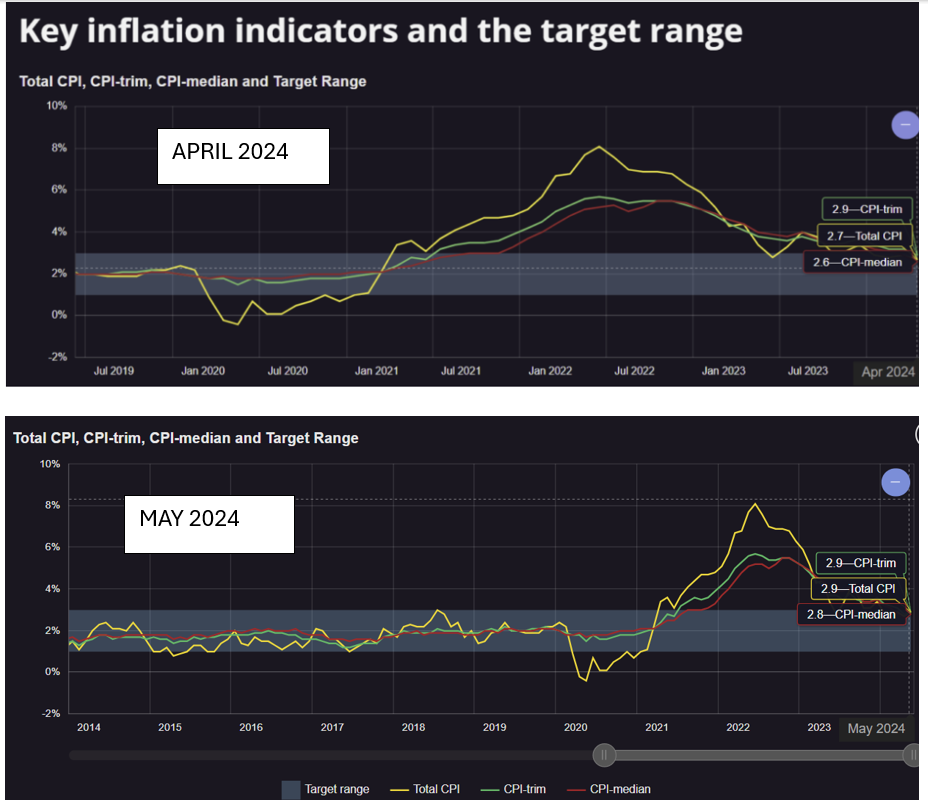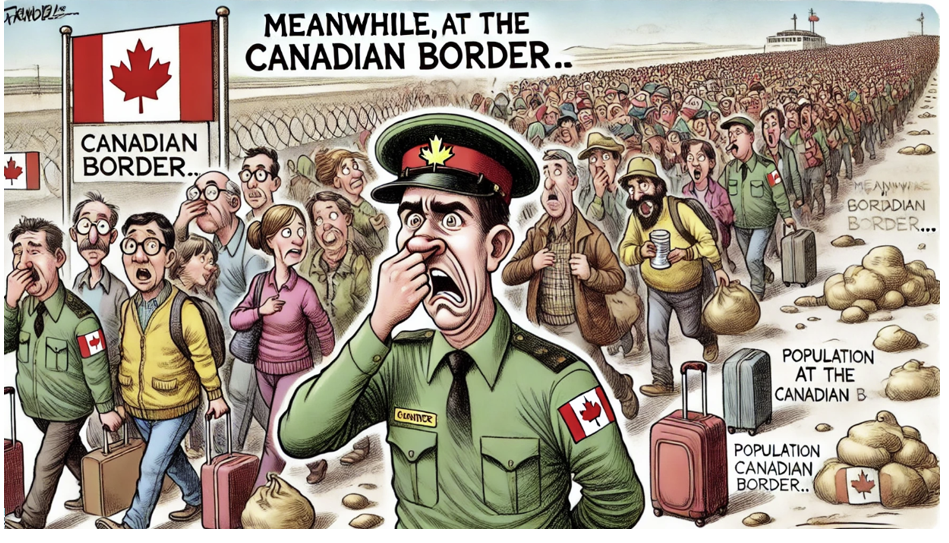
By Michael O’Neill
John McEnroe asked a Wimbledon tennis umpire about the strength of his convictions after one of his serves was called out in a match on June 21, 1981. The epic outburst cemented his reputation as the “bad boy” of tennis, and one clip has entertained over 4 million YouTube users since it was uploaded five years ago.
That same sentiment was shouted by consumers and policymakers alike after Statistics Canada released the May inflation data.
Canadian Inflation Surprises to the Topside
Headline CPI accelerated to 2.9% y/y and firmed to 0.3% on a seasonally adjusted monthly basis. Core CPI rose 0.6% m/m compared to estimates for a 0.2% rise. The Bank of Canada’s inflation indicators ticked higher but remained within the BoC target range.

Source: Bank of Canada
Economists and forecasters were gobsmacked. BMO economists noted that it was the first time inflation had been on the high side of consensus all year. CIBC and TD economists suggested the data disappointment was slightly less heartbreaking than the Edmonton Oilers’ Game 7 Stanley Cup loss. Nevertheless, inflation remains within the BoC target range and that’s a good thing. Or is it?
Supply Chain Deflection
BoC Governor Tiff Macklem is rather fond of regaling audiences with the tales of how policymakers tamed inflation. He bragged that it was his monetary policy decisions that knocked inflation down from its 8.0% peak in 2022 after Russia invaded Ukraine and along with the post-pandemic consumer demand, wreaked havoc on supply chains worldwide. However, he never explained how raising Canadian interest rates from a pandemic low of 0.25% in February 2022 to a peak of 5.25% fixed the global supply chain. It’s hard to believe a 1.25% increase in Canadian rates between March 2, 2022, and June 1, 2022, unsnarled the massive backlog of container ships at the Port of Los Angeles or Port of Vancouver. It didn’t, and rate hikes or rate cuts do nothing to alleviate the 79.6% reduction in dry bulk carriers traversing the Suez Canal in May 2024.
It’s Consumers Fault.
The surprising increase in Canadian inflation was blamed on a 4.6% y/y rise in the cost of travel tours and air travel and a 1.5% y/y increase in food prices. What is really alarming is that according to Statistics Canada, the main contributors to the 12-month change were shelter, foo from restaurants, gasoline, and vehicle insurance. Fortunately, telephone services and internet access prices declined, making it cheaper to call friends and family — not only to say you can’t afford to eat but also that you have no place to live.
CPI Fiction
It comes as no surprise that John and Jane Q Public are not really buying the “Inflation is Falling” story being touted by BoC officials, economists, and financial media. That’s because the evidence says otherwise, especially in the grocery aisle.
In 2019, the cost of a nutritious food basket for a family of four in Toronto was approximately $868 per month. This estimate was based on data collected by the City of Toronto’s Nutritious Food Basket (NFB) tool, which surveys the prices of a variety of healthy foods in grocery stores across the city.
By 2023, the cost of the same nutritious food basket had risen to about $1,177 per month, a 35.6% increase. Furthermore, when people hear government or central bankers trumpeting that inflation is falling, many are misled into believing the cost of living is getting cheaper. Policymakers need to do a better job explaining that the price of things are still going higher, just not as fast.
Labour Market Reality Distortion Field
Governor Macklem said this on June 24. “If we look at the labour market with a longer-term lens, we see that Canada’s growing, inclusive, and well-educated labour force has been a key advantage for our economy. It’s been our primary source of economic growth for the past 25 years, and sustaining this advantage is critical to achieving strong noninflationary growth going forward.”
That advantage didn’t just leave the dock — it sailed into the Bermuda Triangle, never to be seen for decades. Statistics Canada claims the labour force comprises 21,883.0 million people as of May 2024. In January 2023, the labour force totaled 21,078.0 million, meaning there are 804,000 more people in the labour force.

But something smells. The StatsCanada numbers do not agree with the Immigration data.
In his December 2022 Annual Report To Parliament, Minister of Immigration, Refugees and Citizenship, Mark Miller reported the following numbers: Temporary Immigration 4,789,693, IRCC Funded immigrants 607,800, and Permanent Residents 437,539. That is a total of 5.83 million. The labour force has grown from 20,517.9 in 2022 to 21,883.0 in May 2024. So the question is, “Where do the missing 5 million people show up?
The Bank of Canada insists that all monetary policy decisions are data dependent but if the data is as questionable or dubious as it appears, investors everywhere will be shouting “You cannot be serious!”





